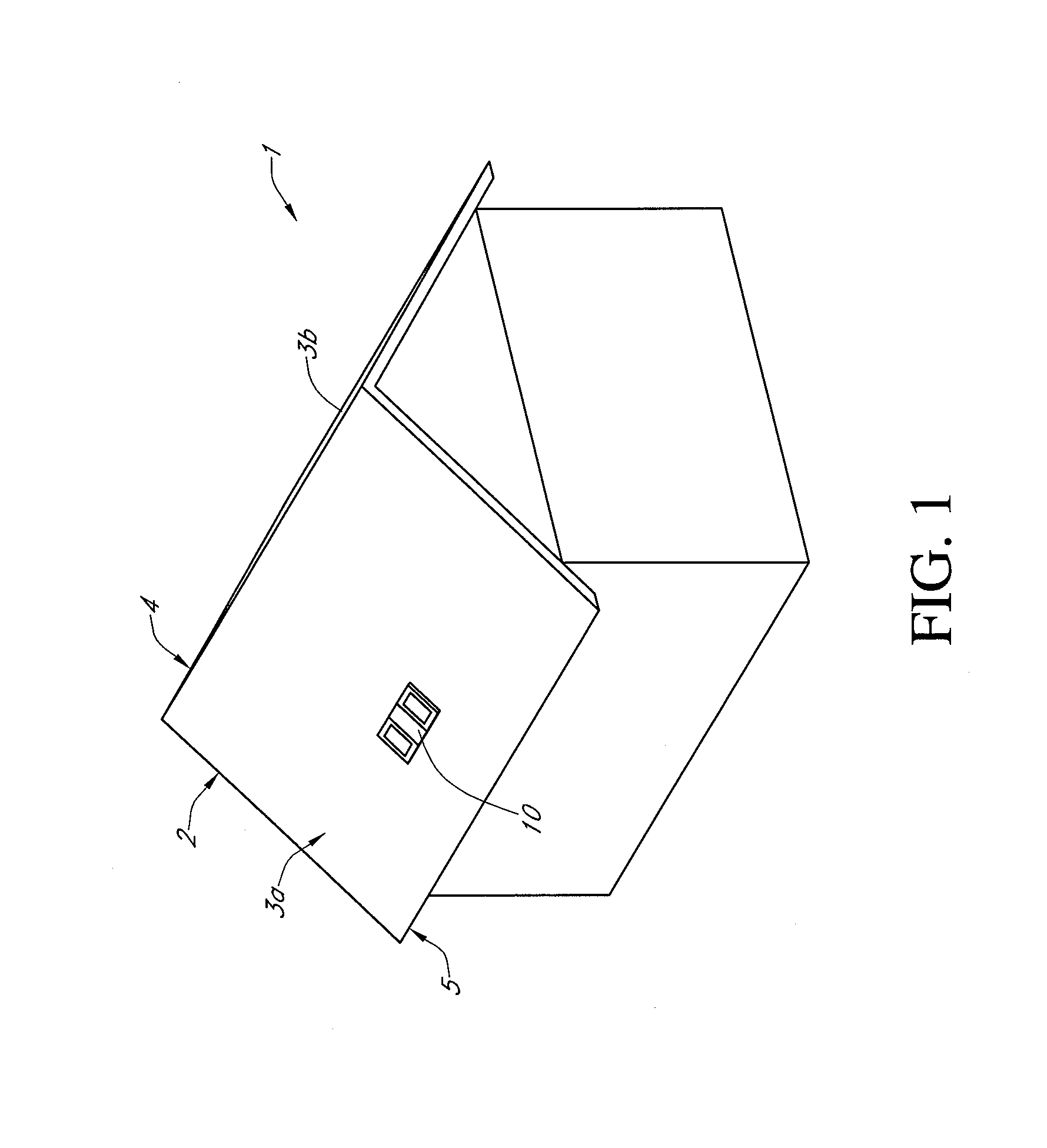Automatic roof ventilation system
a technology of automatic ventilation and roof ventilation, which is applied in ventilation systems, lighting and heating apparatus, heating types, etc., can solve the problems of r value stealing, most common energy loss in a home, and passive ventilation system not teaching camouflaged active ventilation system, etc., to achieve the effect of minimal energy consumption
- Summary
- Abstract
- Description
- Claims
- Application Information
AI Technical Summary
Benefits of technology
Problems solved by technology
Method used
Image
Examples
Embodiment Construction
[0022]FIG. 1 shows a building 1 with a roof 2 comprising two fields 3a and 3b that are joined at their upper ends to define a ridge 4. Lower edges 5 of the fields are referred to as an “eave.” The fields 3a and 3b typically comprise a roof deck covered with roof cover elements such as tiles (e.g., clay or concrete), shingles (e.g., wooden, clay, or composition), or sheeting (e.g., metal). The illustrated roof is suitable for having one or more vents 10 according to one embodiment of the invention. Also, skilled artisans will appreciate that the vents may be provided in a wide variety of different types of roofs, including those not having ridges or sloped fields. In FIG. 1, the vent 10 is positioned on the central part of the field 3a. In other embodiments, the vent may be positioned on a different part of the field, depending on the ventilation needs.
[0023]FIG. 2 illustrates one embodiment of a roof ventilation system 20. The illustrated ventilation system 20 is positioned within a...
PUM
 Login to View More
Login to View More Abstract
Description
Claims
Application Information
 Login to View More
Login to View More - R&D
- Intellectual Property
- Life Sciences
- Materials
- Tech Scout
- Unparalleled Data Quality
- Higher Quality Content
- 60% Fewer Hallucinations
Browse by: Latest US Patents, China's latest patents, Technical Efficacy Thesaurus, Application Domain, Technology Topic, Popular Technical Reports.
© 2025 PatSnap. All rights reserved.Legal|Privacy policy|Modern Slavery Act Transparency Statement|Sitemap|About US| Contact US: help@patsnap.com



